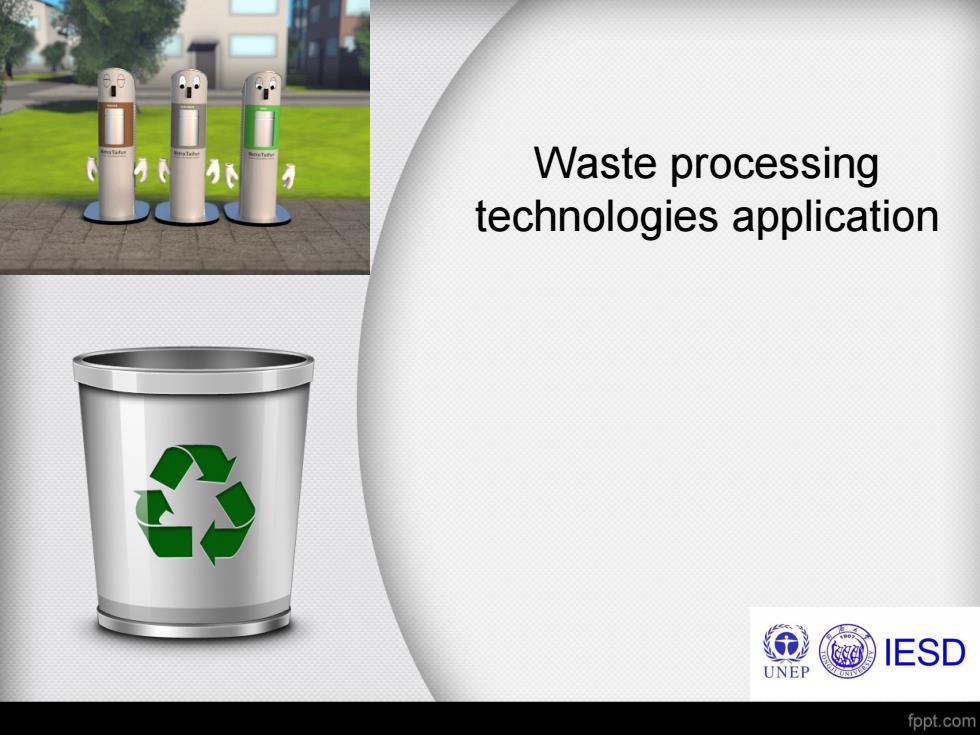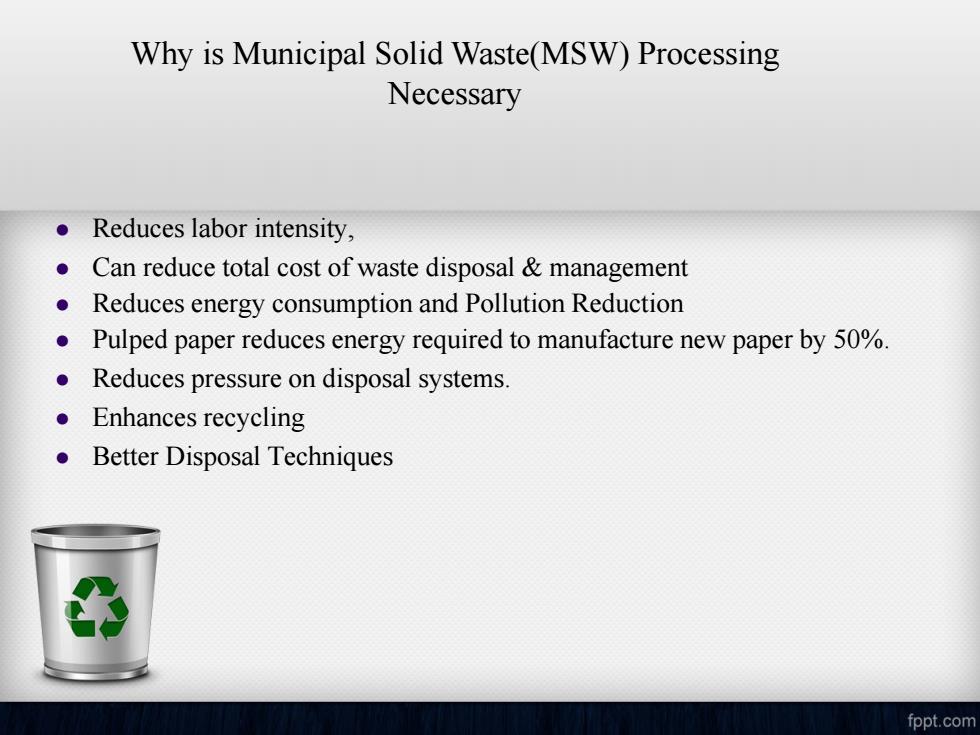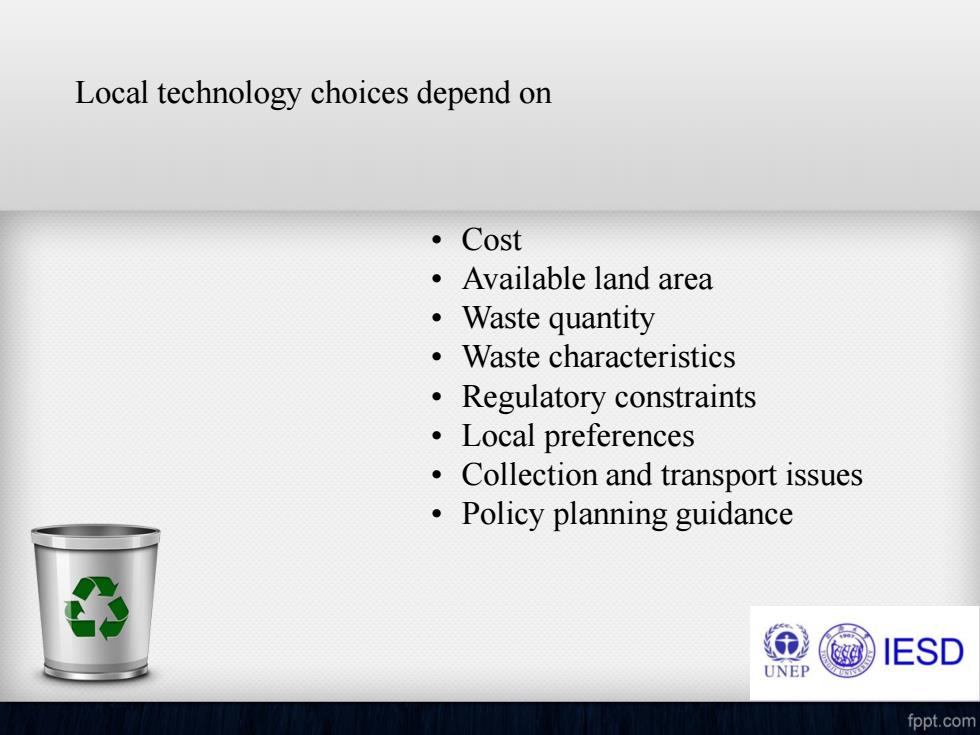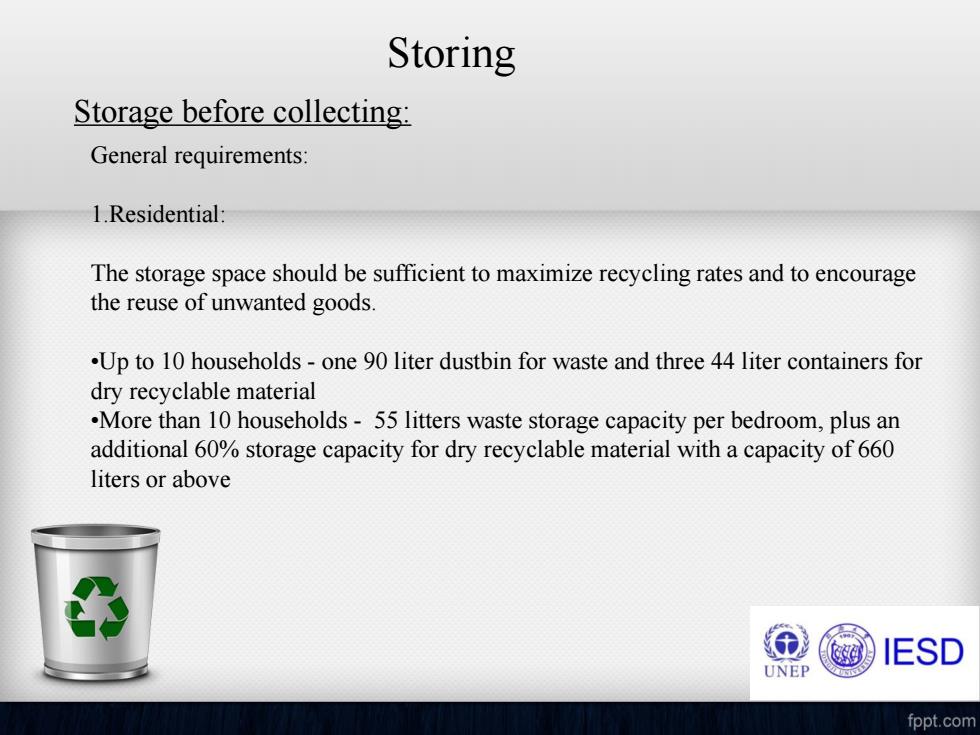
Waste processing technologies application 9 IESD UNEP fppt.com
Waste processing technologies application

Why is Municipal Solid Waste(MSW)Processing Necessary Reduces labor intensity, Can reduce total cost of waste disposal management Reduces energy consumption and Pollution Reduction Pulped paper reduces energy required to manufacture new paper by 50%. Reduces pressure on disposal systems. ● Enhances recycling Better Disposal Techniques fppt.com
Reduces labor intensity, Can reduce total cost of waste disposal & management Reduces energy consumption and Pollution Reduction Pulped paper reduces energy required to manufacture new paper by 50%. Reduces pressure on disposal systems. Enhances recycling Better Disposal Techniques Why is Municipal Solid Waste(MSW) Processing Necessary

TECNOLOGIES IN MSW PROCESSING .·Conveying Compacting ·Shredding ·Roll Crushing ·Pulping ·Granulating IESD UNEP fppt.com
• • Conveying • Compacting • Shredding • Roll Crushing • Pulping • Granulating TECNOLOGIES IN MSW PROCESSING

Local technology choices depend on Cost ·Available land area ·Waste quantity Waste characteristics Regulatory constraints ·Local preferences Collection and transport issues Policy planning guidance 红 IESD UNEP fppt.com
Local technology choices depend on • Cost • Available land area • Waste quantity • Waste characteristics • Regulatory constraints • Local preferences • Collection and transport issues • Policy planning guidance

Storing Storage before collecting: General requirements: 1.Residential: The storage space should be sufficient to maximize recycling rates and to encourage the reuse of unwanted goods. .Up to 10 households-one 90 liter dustbin for waste and three 44 liter containers for dry recyclable material .More than 10 households-55 litters waste storage capacity per bedroom,plus an additional 60%storage capacity for dry recyclable material with a capacity of 660 liters or above 》 IESD UNEP fppt.com
Storing Storage before collecting: General requirements: 1.Residential: The storage space should be sufficient to maximize recycling rates and to encourage the reuse of unwanted goods. •Up to 10 households - one 90 liter dustbin for waste and three 44 liter containers for dry recyclable material •More than 10 households - 55 litters waste storage capacity per bedroom, plus an additional 60% storage capacity for dry recyclable material with a capacity of 660 liters or above